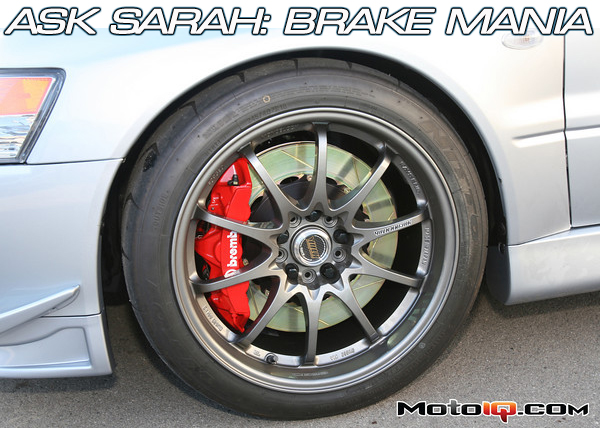,
 |
| Since brake fluid absorbs water from the air and this water greatly lowers the fluids boiling point, its bet to always used fresh brake fluid from a recently opened bottle. Use you extra fluid from prior jobs for flushing or the clutch system! |
Is there a correct order to bleeding brakes? Like, start with the fronts or the right side or what…
B.H.
One wheel at a time! In the olden days, brakes were often bled starting with the wheel furthest away from the master cylinder and working up to the wheel located closest to the master cylinder, but modern cars contain separate brake circuits for the rear and front brakes and ABS or dynamic stability control systems that affect the order the manufacturer suggests bleeding the brakes, so check with your car’s factory service manual for the correct order. Make sure you keep the master cylinder filled with brake fluid to prevent air from entering the brake system.
 |
| Make sure you keep the master cylinder filled with brake fluid to prevent air from entering the brake system! |
I just replaced the front brake pads in my 1992 Saturn SL2 but some lady cut me off the next day and I had to slam on the brakes but I still had to swerve into the other lane to avoid hitting her car. My brakes seem fine now just cruising, but are these pads crap at high speeds or did I do something wrong?
Scott B.
West Des Moines, Iowa
New brake pads, also known as green pads, have thermosetting plastic resin binders that will be driven out of the pad on the first few heat cycles. As they cure, they let out a layer of excreted gas which the pad can skid across, causing green fade, which is similar to pad fade. While the brake pedal may still feel firm, the car won’t stop. Green fade typically occurs very quickly and without warning. It can even occur from the first instance of hard braking on worn in brake pads. Properly bedding in new brake pads cures the resins to break the pads in under control and gives them good heat properties. Check with the pad manufacturer’s instructions to make sure you’ve properly bedded the pads but typically this involves a few 60 mph to 15-30 mph moderate to hard pressure stops followed by 30 minutes or so to let the brakes cool down before driving again. Also, it is generally better to bed in new pads on older rotors (as long as the older rotors are not worn or pitted) as the older rotors are more dimensionally stable and less likely to warp or glaze new pads. New “green” rotors require a slower break in cycle to cure properly.
 |
| A new rotor with new pads must be broken in carefully for a longer period of time to avoid warping the rotor |



